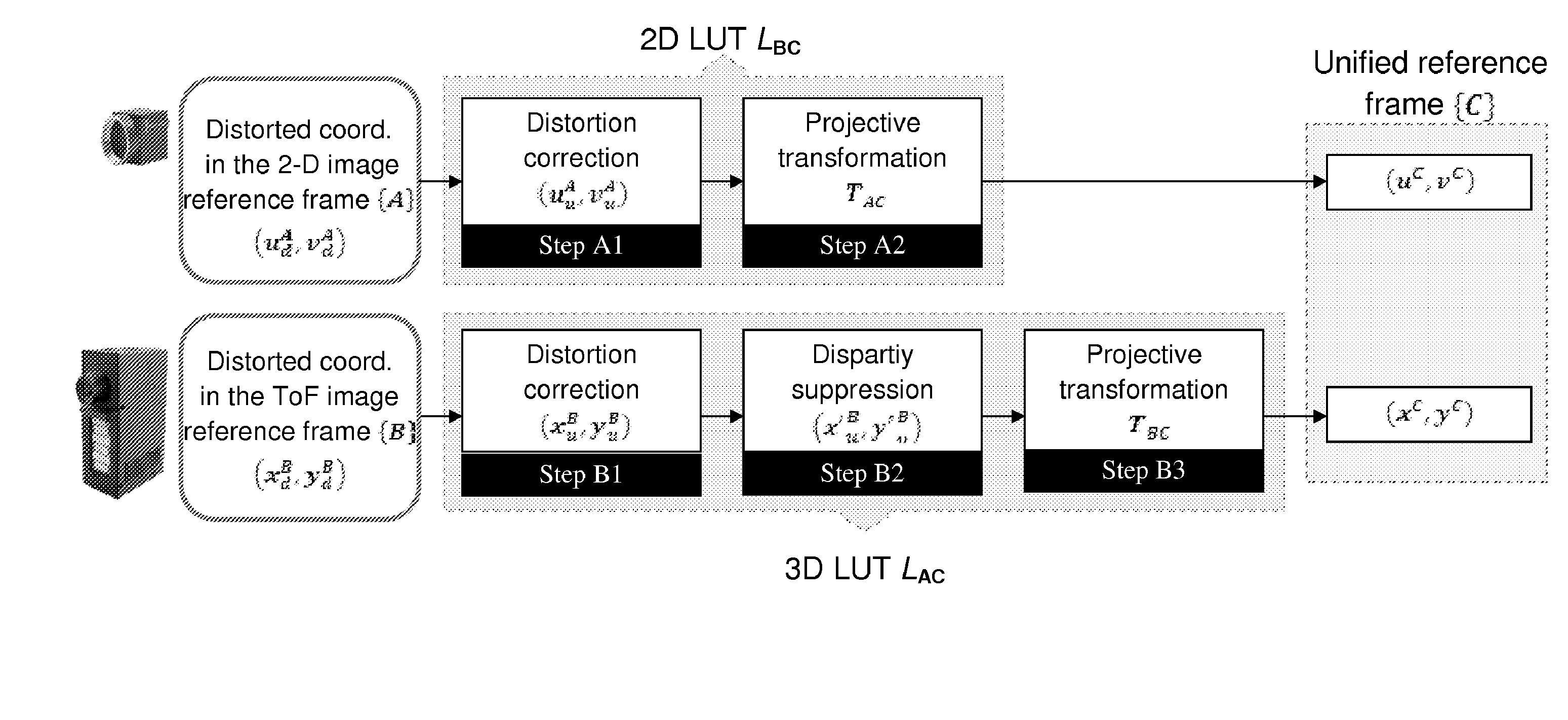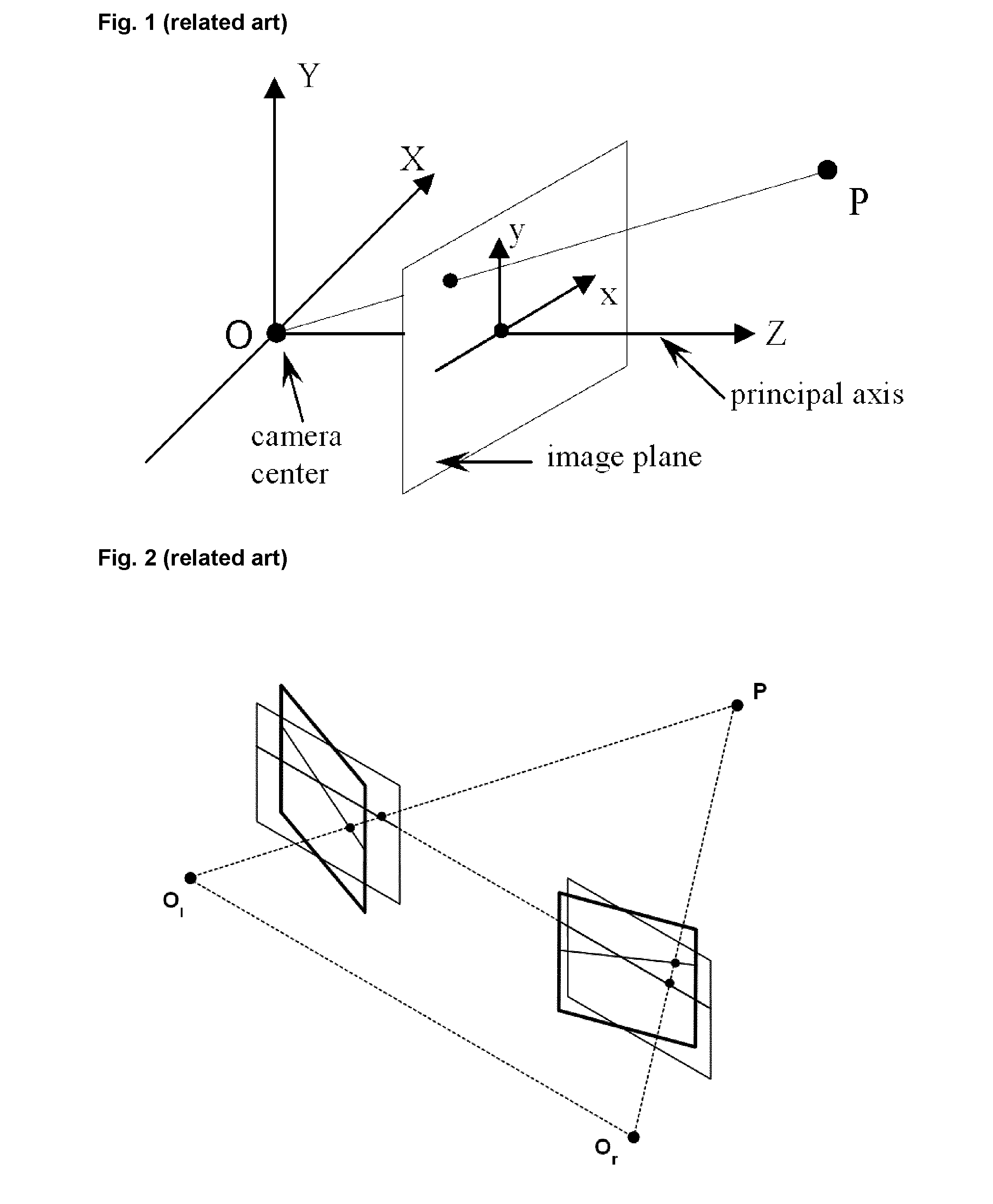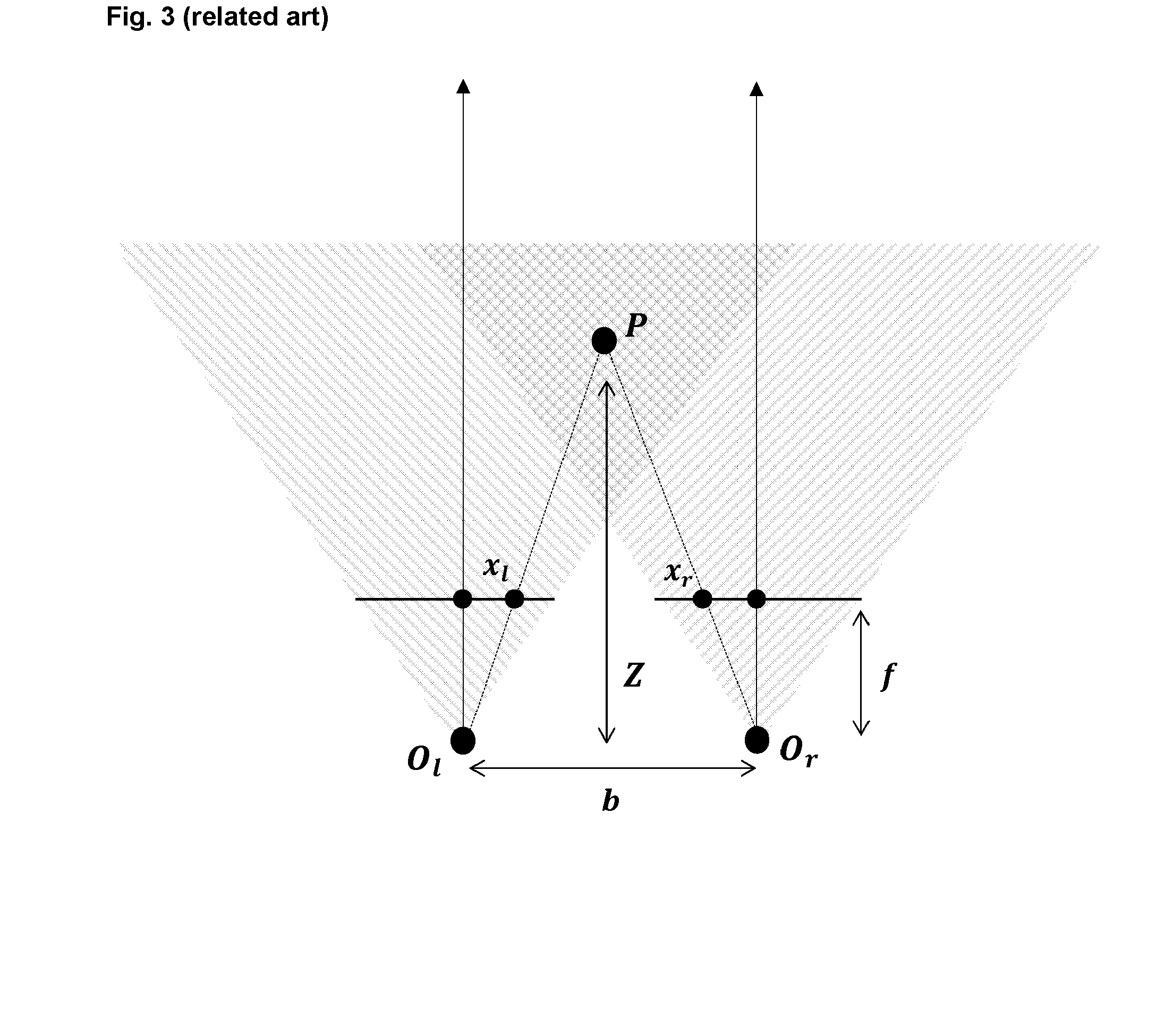Range image pixel matching method
- Summary
- Abstract
- Description
- Claims
- Application Information
AI Technical Summary
Benefits of technology
Problems solved by technology
Method used
Image
Examples
Embodiment Construction
[0040]Introduction—Stereo Vision
[0041]Matching the data of two 2D cameras onto each other is the main subject in the field of stereo vision. As this field is well established and developed with existing industrialized products, the state of the art is only briefly summarized with emphasis on the differences to the invention. For more details on stereo vision, the interested reader is referred to textbooks like [5,6].
[0042]In the following we consider two sets of data IA(i,j) and IB(k,l) from the same scene, recorded in the camera reference frames A and B, respectively. The data are stored in the form of matrices where the indices i=1, . . . M, j=1, . . . , N, respectively k=1, . . . , K, l=1, . . . , L, refer to the pixels of the corresponding camera. The data types of IA and IB maybe digitalized gray or color values.
[0043]Solving the correspondence problem, that is finding pairs {(m,n),(k,l)} of pixels from both images that correspond to the same point in the scene is the main topi...
PUM
 Login to View More
Login to View More Abstract
Description
Claims
Application Information
 Login to View More
Login to View More - R&D
- Intellectual Property
- Life Sciences
- Materials
- Tech Scout
- Unparalleled Data Quality
- Higher Quality Content
- 60% Fewer Hallucinations
Browse by: Latest US Patents, China's latest patents, Technical Efficacy Thesaurus, Application Domain, Technology Topic, Popular Technical Reports.
© 2025 PatSnap. All rights reserved.Legal|Privacy policy|Modern Slavery Act Transparency Statement|Sitemap|About US| Contact US: help@patsnap.com



